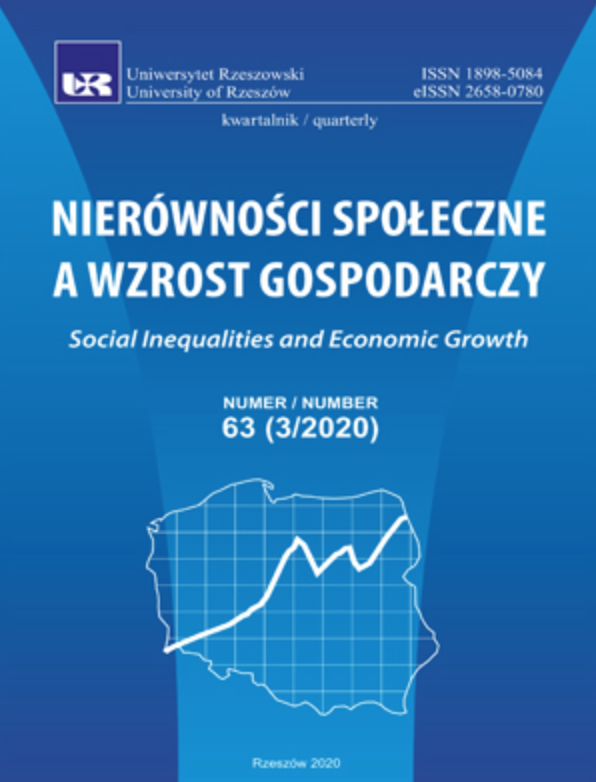Zasoby kapitału ludzkiego w Polsce północnej
Human capital resources in northern Poland
Author(s): Iwona JażewiczSubject(s): Socio-Economic Research
Published by: Wydawnictwo Uniwersytetu Rzeszowskiego
Keywords: education; human capital; education outputs; northern Poland
Summary/Abstract: For the purposes of this study it was assumed that human capital is: knowledge, skills,competences and other features embodied in man, which are associated with his economic activity.The main purpose of this study was to identify the state and changes in human capital resources innorthern Poland and to present their spatial diversity using hierarchical agglomeration techniques.The research concerned northern Poland, understood for the purposes of this study as twovoivodships, i.e. the Pomorskie and the Zachodniopomorskie voivodeships, each divided intopoviats. The source material came from the published and unpublished statistical materials of theCentral Statistical Office. In turn, the resources of the Central Examination Board and the RegionalExamination Boards in Gdańsk and Poznań were used to develop school educational results. Thetime range of the study was the years 1999–2018.The research clearly shows that the role of human capital resources in northern Poland isincreasing. On the one hand this is the result of the growing number of people with the highest levelsof education, and on the other the growing social awareness that increases in quality and livingconditions largely depends on self-investment. The change in life attitudes of young people, who areincreasingly gambling on achieving higher education, has been confirmed by the growing number ofstudents and changes in education. In addition, the introduction to the higher education sector of nonpublic universities and the education of academic functions in sub-regional centers has increasedthe spatial accessibility to education, primarily for the residents of peripheral regions. However,the distribution of human capital resources in the studied area is characterized by relatively strongpolarization with a distinct distance between the Tri-City and Szczecin agglomerations, which wasconfirmed by the classification of poviats using agglomeration techniques. The disparities in thelevel of education in northern Poland are to a large extent the heritage of the socialized sectorin agriculture. Post-farming areas form depopulation areas with unfavorable socio-economicconditions, where parents attach less importance to the education of their children.However, the positive effect of the ongoing changes is the involvement of human capital witha high level of education in research and development activities. Research shows that regions witha higher level of education and socio-economic development are characterized by greater wealthexpressed in terms of GDP per capita.
Journal: Nierówności Społeczne a Wzrost Gospodarczy
- Issue Year: 2020
- Issue No: 64
- Page Range: 135-149
- Page Count: 15
- Language: Polish

